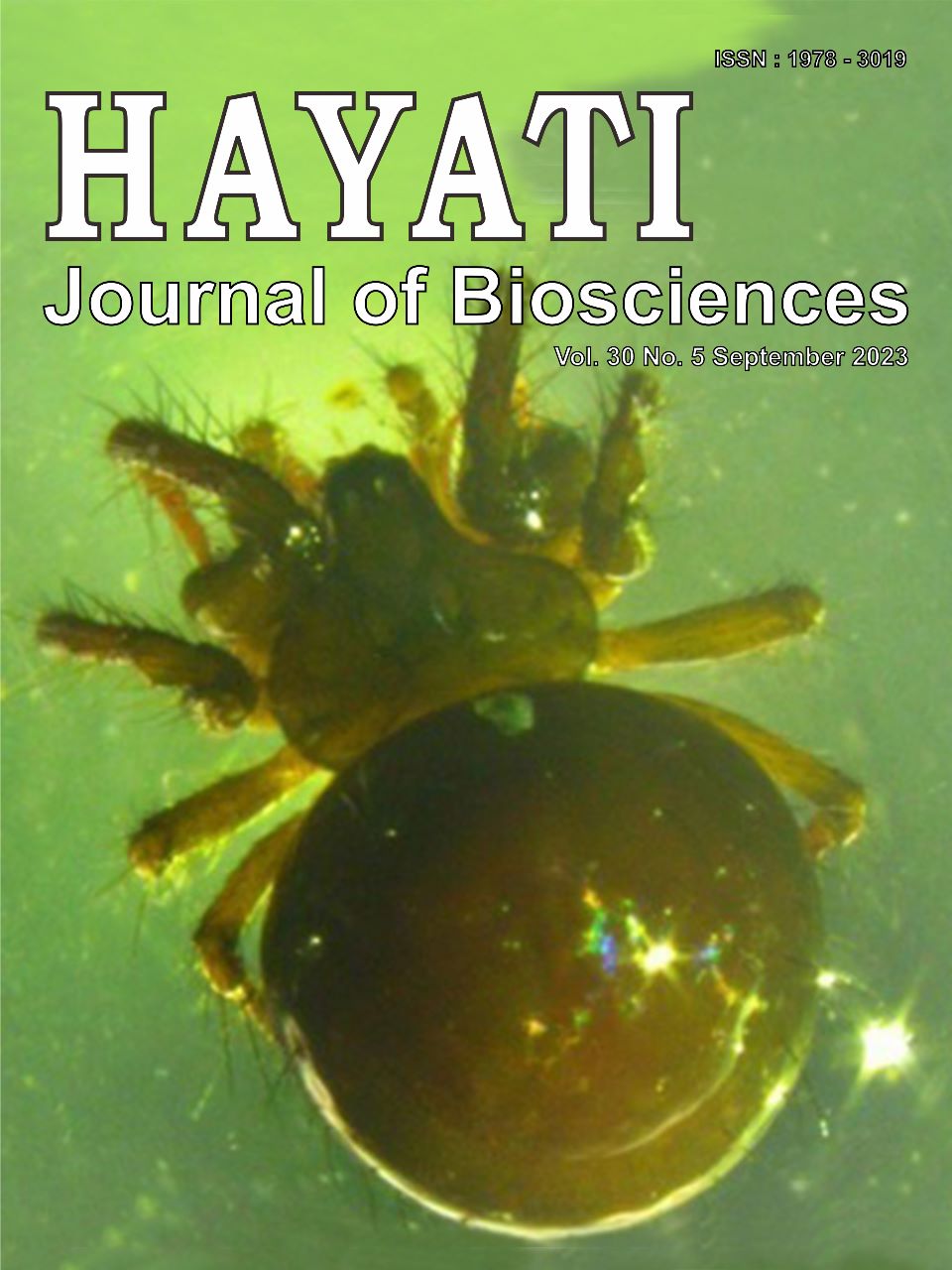Fermentation of Gracilaria verrucosa to Reduce Insoluble Non-Starch Polysaccharide (iNSP) Using Cellulolytic Bacteria Pseudomonas stutzeri (ISO2) for a Dietary Ingredient of Golden Rabbitfish, Siganus guttatus
Abstract
A series of experiments were conducted to optimize P. stutzeri (ISO2) fermentation in reducing the non-starch polysaccharide (NSP) of G. verrucosa as golden rabbitfish feed ingredient. A completely randomized experimental design in triplicates was used to optimize the pH of CMC media and the duration of fermentation. Using a 3 × 3 factorial design with two factors and triplicates, the optimum substrate-inoculum interaction was determined. Nine levels combination of G. verrucosa (G1 = 50 g; G2 = 100 g; G3 = 150 g) and P. stutzeri inoculum (P1 = 5%; P2 = 10%; P3 = 15%) were investigated. Cellulolytic activity (CA) of P. stutzeri was measured using UV-vis spectrophotometer, meanwhile chemical compound and physical characteristics of fermented G. verrucosa were evaluated using Fourier Transform Infra Red (FTIR) and Scanning Electron Microscope (SEM) respectively. Data on fermentation optimization were analyzed statistically using ANOVA. The result indicated pH, duration of fermentation and substrate-inoculum ratio had a significant effect on bacteria growth and CA (P<0.05). P. stutzeri grew well at pH 8, the fermentation process was ideally running in four days with (150 g-10%) G:P level. Hemicellulose was the most biodegradable NSP compared to cellulose and lignin. Fermented G. verrucosa (FG) had FTIR vibrations which indicated the conversion of the cell wall to reducing sugar. The fermentation process resulted in surface structure changes of G. verrucosa based on SEM photos.
Downloads
Copyright (c) 2023 Sri Redjeki Hesti Mulyaningrum, Haryati Haryati, Siti Aslamyah, Asda Laining, Hidayat Suryanto Suwoyo

This work is licensed under a Creative Commons Attribution-NonCommercial 4.0 International License.
HAYATI J Biosci is an open access journal and the article's license is CC-BY-NC. This license lets others distribute, remix, tweak, and build upon author's work, as long as they credit the original creation. Authors retain copyright and grant the journal/publisher non exclusive publishing rights with the work simultaneously licensed under a https://creativecommons.org/

























.png) IPB University
IPB University Department of Biology
Department of Biology The Indonesian Biological Society
The Indonesian Biological Society 

